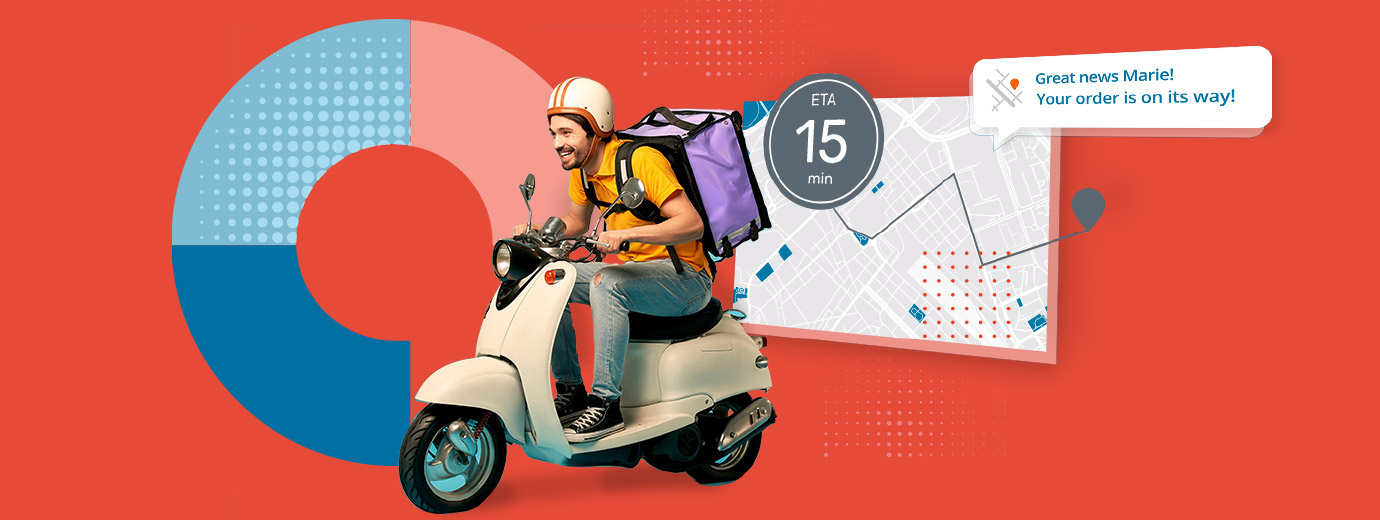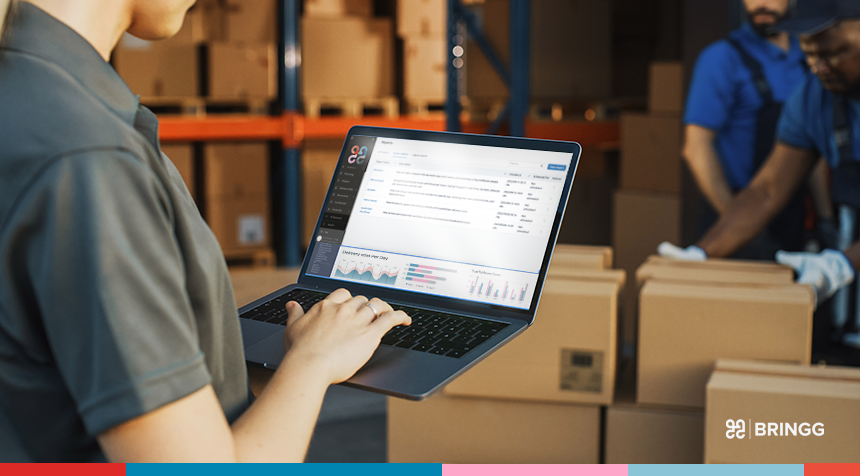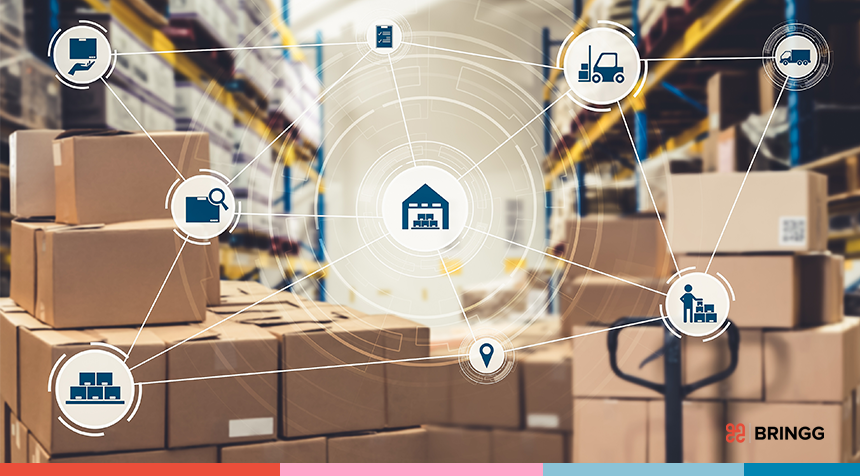If 2020 taught us anything, it’s that restaurant delivery is no longer a “nice to have”. Consumers now rely on delivery services, curbside pickup and drive-thru options to an unprecedented degree. People want their food, they want it now, and perhaps most importantly, they want it fresh, quickly, and safely. Delivery takeout technology and delivery services are changing at a rapid pace, and restaurant chains must look to relevant food delivery technology in order to ensure their off-premise delivery and pickup operations can keep up with demand.
The off-premise dining experience – from placing an order online to receiving the food – is something that all restaurants must take into consideration if they want to stay current and competitive.
In this post, we will look at the top technologies for managing profitable off-premise fulfillment at scale and orchestrating competitive takeout experiences.
Main challenges of restaurant delivery
Before reviewing requirements for off-premise restaurants software, it is important to understand the main challenges that restaurants face when dealing with delivery.
Unlike other retail businesses fulfilling online orders, restaurants must deal with unique issues such as food quality and freshness and short (ASAP) fulfillment times into account.
Food Quality
When you order food delivery, there is one golden standard: to receive your order when the food is still fresh and at the right temperature (no one wants cold pizza or warm ice cream). Food, especially fast food, has a limited shelf life and can only survive for a certain amount of time after it has been taken out of the fridge or oven, before the quality decreases.
There’s a lot to take into consideration here. It’s not just about the amount of time that it takes the driver to reach their destination. If the food is left out for an extended period of time while the driver is en route to pick it up at the restaurant, the food can go bad (wilted french fries and soggy fast food being the perfect example). If drivers arrive too early and loiter, waiting for orders to be prepared, they can take up precious space needed for pickup and drive-thru consumers, or bother on-premise diners. This lack of coordination is one of the main reasons that it often takes a long time for food to be delivered. Food delivery software for restaurants that engineers ‘just in time’ order preparation and pickups, and allows restaurants, delivery apps, and drivers to coordinate with one another, can solve this problem.
Costs
If restaurants aren’t careful, fulfillment costs can significantly bite into profit from delivery orders.
Free delivery – Whether you run a fast food chain or a high-end restaurant franchise, your customers expect free delivery no matter their location (at least after ordering a minimum amount of food online). In order to compensate for this, restaurants need to reduce their cost to deliver, and make sure they fulfil any food delivery order from the location closest to the customer.
Order density – One of the problems is that, with rare exceptions, takeout orders are all ASAP (as opposed to other types of eCommerce orders, which can be delivered anywhere from hours or days after the purchase, allowing more time for organization and efficient delivery). This means that many restaurants need to send out orders as they come in. Drivers are often dispatched with only one or two orders at a time. This low order density keeps the cost to deliver higher than it has to be.
Managing peaks and ebbs in demand – There’s also the need to juggle having enough drivers on hand during peak times (typically lunch and dinner) together with overcapacity the rest of the day. If there are not enough drivers available during peak hours, the on-time-delivery (OTD rate) will suffer, with a negative impact on market share and fewer returning clientele. On the other hand, if too many unneeded drivers are on the company clock, they will be an unnecessary and wasteful resource.
Time to Deliver
As mentioned above, when people order takeout, they want fast delivery service. Only 20% of people are willing to wait more than 40 minutes before their food arrives. People are willing to pay up to $5 in delivery takeout fees, and 30% are willing to pay more if it means that their food will arrive faster.
When handling a massive number of orders through hundreds of locations, restaurants are simply unable to handle deliveries manually and must use relevant technologies to shorten and optimize the time to deliver.
Managing multiple fleets
It is always a risk to rely on a single delivery provider, especially as the percentage of sales from off-premise orders continues to grow.
One way restaurants are meeting the exceptional demand online is by engaging with crowdsourced fleets and Daas (delivery as a service) providers. However, many restaurants have no way to compare fleet performance, or to receive feedback from off-premise diners who received their orders from an external driver.
Other restaurants only use one third party fleet per location or region, as a direct standin for an internal fleet, without realizing how much potential speed, efficiency and cost-effectiveness they lose out on this way. Furthermore, it is always a risk to rely on a single delivery provider, especially as sales from off-premise orders continue to grow.
Competition
Marketplaces create competition. This isn’t necessarily a bad thing, but it challenges restaurants to be at the top of their game in order to stand out and gain market share.
A top of the line branding experience, together with quick pickup times is essential when competing amongst other similar restaurants on marketplaces. Restaurants who want to remain competitive and relevant, must take marketplaces into account, considering that 70% of all digital orders are expected to come from marketplaces by 2022.
Order Tracking
Technology has made us expect transparency and clarity with just about everything these days, and restaurant delivery is no different. Customers want real-time visibility into their order status (it’s fun watching the food make its way towards you when you’re hungry!) and restaurants often don’t have the answers as to why a specific delivery is late.
There is no way to make this happen without a specific restaurant delivery app that shows customers exactly where their takeout is in real time.
Now that we’ve gone through the main challenges of restaurant delivery, let’s understand how technology and food delivery management software can make restaurants competitive in the delivery field.
What you’ll need for a competitive restaurant delivery experience
Restaurant delivery is more than a service, it’s a true experience. People order food not only because they’re hungry, but because they want to be pampered and to enjoy food that they didn’t prepare themselves. In the COVID-19 age, people are ordering more than ever before because they simply can’t, or don’t feel comfortable dining in.
The key to creating the ultimate experience is to identify the right restaurant delivery software. Cloud based delivery management software helps large chains with thousands or millions of orders to give each customer the ultimate experience, without having to do anything manually (besides prepare delicious food).
How can food delivery technology transform the off-premise experience? Let’s take a look.
Digitize and connect
In order to get everything running well and in-sync, restaurant management software will help restaurants connect all aspects of the business. This starts with connecting POS and online sites (be it your own eCommerce site or marketplaces in use). But digitizing and connecting goes way beyond the obvious online/offline connection.
Cloud-based food delivery platforms allow restaurants to connect eCommerce, CRM retail, kitchen, and delivery teams across one or multiple branches. This information sits in the “restaurant cloud”, allowing easy access to workers, drivers, etc.
Digitizing and connecting is the basic platform or foundation on which successful restaurant delivery rests. With orders coming in from multiple locations and going out ASAP, having a single place to manage your restaurant delivery operations will help your restaurant teams give your customers what they’re looking for: quick and delicious restaurant delivery.
Restaurant delivery system software allows you to integrate both marketplaces and third-party delivery systems into one restaurant platform.
This is critical. Why? Because orders from all systems need to come into one centralized place in order to be handled quickly and correctly. With various systems in place at once, restaurants need to be able to receive online orders through technology specifically built for this need: food delivery software.
Dynamic menu management
When you go to dine at a restaurant, the waiter usually begins with the specials and will also let diners know if anything is missing from the menu that day. In addition, many restaurants may have certain menus available only in specific areas or branches and sales may be applicable in various situations or locations.
With restaurant delivery, this becomes an issue. Restaurant delivery POS software must allow restaurants to sync between in-house inventory, differences in menus in different branches, changes, etc. Online marketplace menus are particularly prone to problems as they aren’t updated on a regular basis with specials and changes to menus. There’s nothing more frustrating for a customer than placing an order online based on the menu, and getting a phone call afterwards that the product is no longer available. The same goes for out-of-date pricing.
Restaurant management platforms solve this issue by allowing restaurants to sync, edit, and distribute their menu to each channel and marketplace as needed. This is an important part of having a transparent process in place online. When someone places an order online, they see only updated, relevant items and specials, guaranteeing order availability and with it an excellent experience.
Applying technology to flexibly engage with third party delivery fleets
Restaurant delivery service software gives restaurants a unique opportunity: the ability to use analytics to utilize multiple third party delivery fleets when and where they are needed.
How?
Delivery orchestration software, together with restaurant order management apps, allows restaurants to predict and assign orders to third party fleets during peak hours, in order to stay on top of customer demand and ensure high on-time-delivery rates. This is essential, as no one wants to fall behind when peak time arrives.
Some restaurants have decided to abandon in-house delivery fleets altogether, opting for third party providers and crowdsourced fleets. Fleet management software is key to being able to flexibly manage multiple fleets – owned or external – delivering from the same locations and regions.
Read: Third party delivery done right: Why we built a delivery network
Predictive technology for just-in-time order prep and pickup
Just in time (JIT) order preparation technology allows restaurants to remain in-sync with pickup to guarantee that food is ready exactly when the relevant person arrives to pick it up.
Using a JIT order prep solution prevents unnecessary waiting and pickup congestion, ensures inventory quality (be it hot, cold, or frozen) and increases overall output.
JIT order prep technology can go both ways. In the first scenario, order prep is timed around the customer’s ETA at the restaurant. A trigger is sent to the restaurant to start preparing the meal based on reported prep time needed and when the customer is expected to arrive. The process can also go the opposite way. A customer’s notification to pick up an order can be delayed to fit around order prep time, assuring that they customer won’t arrive too early.
Designated space for delivery orders
While the ultimate goal is for the delivery drivers to arrive at the exact second that the order is ready, this of course isn’t always possible.
Therefore, restaurants need to be prepared for drivers coming in for pickups in addition to patrons who are waiting on premise for their orders to be ready. This means designating appropriate spaces for each group of people: on-premise diners, waiting pickup patrons and delivery drivers.
Having the right processes for minimizing wait times is critical, especially given the emphasis on health and safety today. Aiming for fewer people waiting on site should be a major goal in all pick-up operations. When the kitchen, delivery driver and customer are in-sync, wait times are shortened, reducing the number of people on-premise.
Communications and visibility
Restaurant delivery apps give restaurants and their customers the ability to see how order status is advancing throughout the entire order process.
From placing the order, seeing the restaurant receive the order, preparation in progress, driver ETA, and where the driver is on the way, using restaurant delivery management software can provide the transparency that a great off-premise dining experience demands. When people order delivery and see exactly where their order is in the prep/delivery process, it reduces potential anxiety (and in turn reduces time-consuming ‘where is my order’ status calls to customer service teams).
Another important aspect is customers’ ability to communicate with the driver if they need. A delivery tracking app will allow them to safely call drivers with masked numbers in order to relay information about location, preferences, etc.
Contactless delivery
Restaurants, like every other business with deliveries, must have a contactless delivery option today. Integrating this option into food delivery software allows restaurants to notify customers when their orders have arrived, confirm delivery and even accept tips online.
Delivery software
Before delivery was the go-to fulfillment option for many customers, it comprised a much smaller percent of sales. Marketplace real-estate was a ‘nice to have’. Now, everything has changed. Restaurants must place themselves wherever their customers are, and must advance technologically in order to handle the customer demand and volume they face today.
The ability to scale rapidly, easily and cost effectively hinges heavily on the technology in use. By choosing the right restaurant management softwares, restaurants and chains are able to use multiple fleets, ensure just-in-time order orchestration and perhaps most importantly, put customers at the center with end-to-end visibility for both sides across the entire delivery flow.
Off-premise fulfillment tech that meets the demands of the future
Bringg’s data-led delivery and fulfillment solutions are the number one way to scale up and optimize your off-premise delivery and pickup operations, and meet increasing demand with exceptional customer experiences. The cloud platform is flexible and scalable, giving you the ability to expand order volumes, location count, or third party delivery fleets as needed. Bringg tackles some of the most difficult aspects restaurants face while dealing with deliveries, including managing internal and external fleets for optimal efficiency, and just-in-time order preparation that ensures food quality, on-time deliveries, and seamless efficiency across all teams in the delivery flow.
Customer experience is the top priority and Bringg provides the option of a branded experience with full order visibility for the customer. Teams have full access to a wide range of valuable business insights while also syncing menus and promotions for accurate menu distribution across online offerings. Our unique orchestration technology provides just-in-time order prep, ensuring that orders are ready just as drivers arrive. Restaurants are able to collect valuable feedback after the order is delivered in order to improve the delivery process.
To learn more about scaling and optimizing your off-premise pickup and delivery, visit Bringg for Restaurants.



